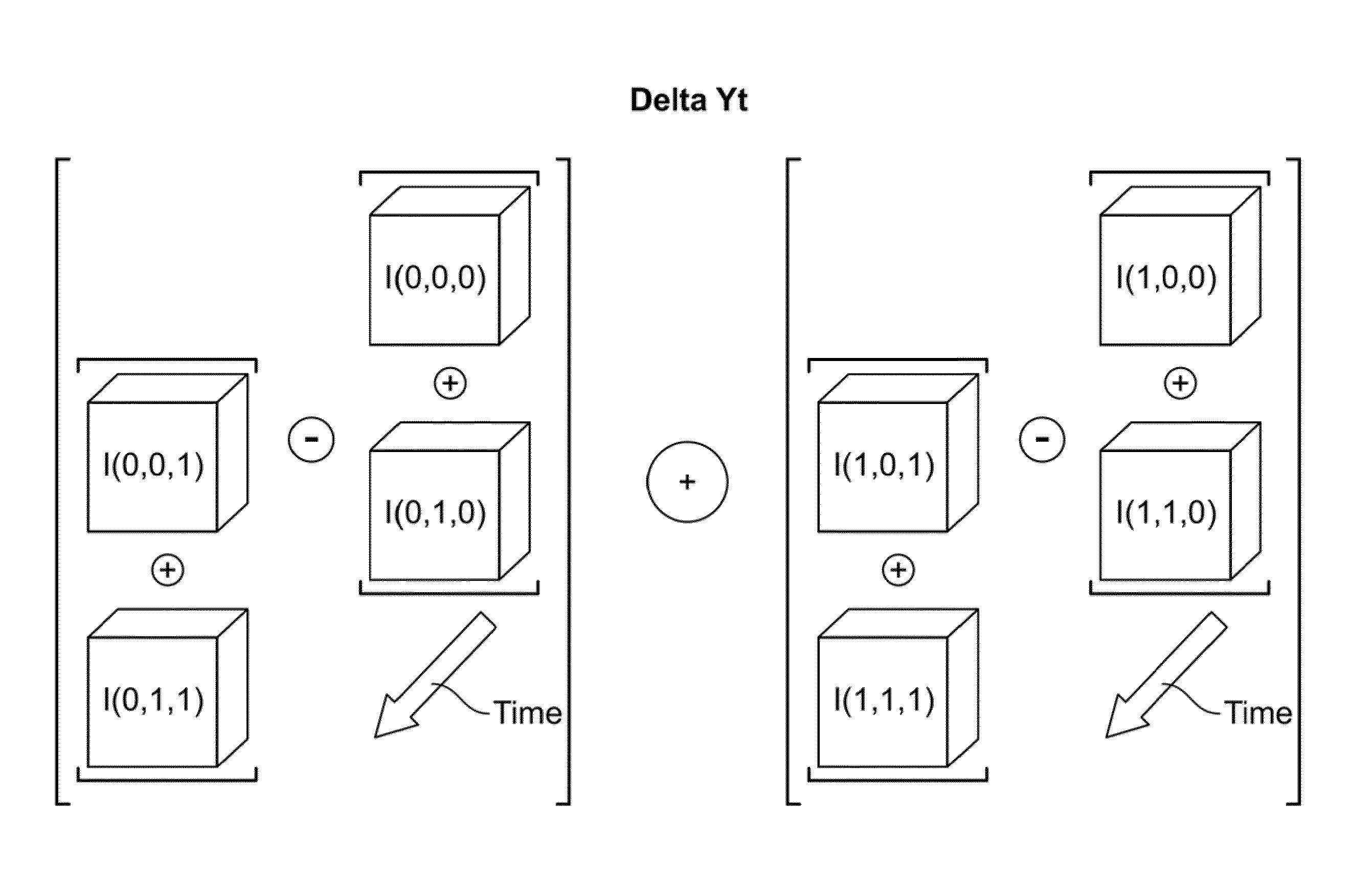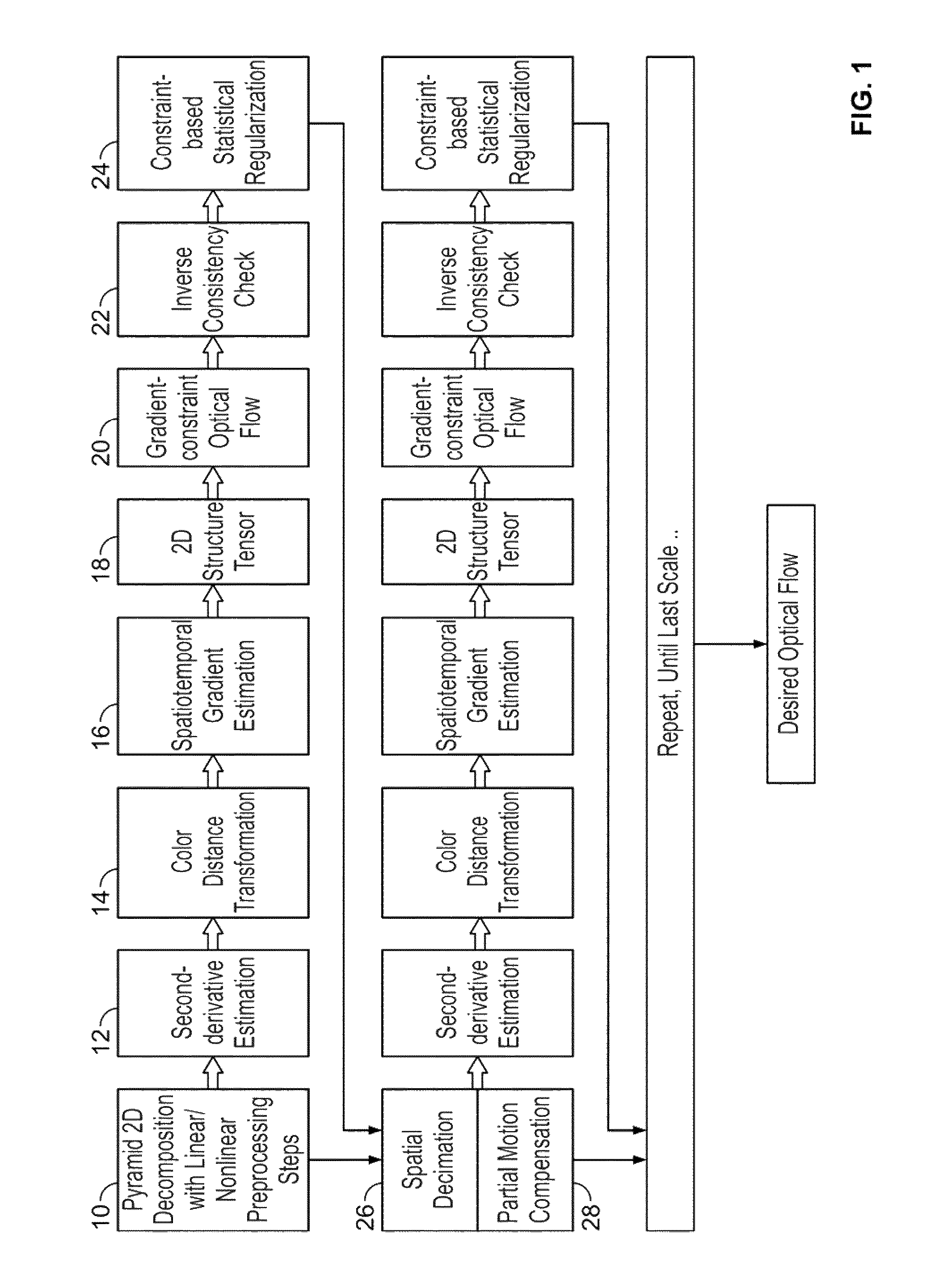Digital processing method and system for determination of optical flow
a digital processing and optical flow technology, applied in image analysis, image enhancement, instruments, etc., can solve the problems of low accuracy of methods, vectors may not be generated, and known methods for calculating optical flow encounter several stumbling blocks
- Summary
- Abstract
- Description
- Claims
- Application Information
AI Technical Summary
Benefits of technology
Problems solved by technology
Method used
Image
Examples
Embodiment Construction
[0025]FIG. 1 depicts a process flow diagram illustrating exemplary steps for computing an optical flow field between a pair of images, according to an embodiment of the present invention. At step 10, each of the pair of images is decomposed into image pyramids. In the process of generating the image pyramids, at least one of several linear and / or non-linear filters may be applied to the decomposed pair of images. The image pyramids may be decomposed using arbitrary scaling factors less than one-octave-per-level in order to reduce the problem of later estimation steps being fixated at a local minimum instead of the global minimum, thereby preventing what is known as an “aperture problem.” At step 12, at the lowest resolution image pyramid scale, the pair of decomposed images is transformed to second derivative representations under an assumption that the brightness gradient (or, alternatively, the second derivative of the brightness) is assumed to be constant. At step 14, the second ...
PUM
 Login to View More
Login to View More Abstract
Description
Claims
Application Information
 Login to View More
Login to View More - R&D
- Intellectual Property
- Life Sciences
- Materials
- Tech Scout
- Unparalleled Data Quality
- Higher Quality Content
- 60% Fewer Hallucinations
Browse by: Latest US Patents, China's latest patents, Technical Efficacy Thesaurus, Application Domain, Technology Topic, Popular Technical Reports.
© 2025 PatSnap. All rights reserved.Legal|Privacy policy|Modern Slavery Act Transparency Statement|Sitemap|About US| Contact US: help@patsnap.com



